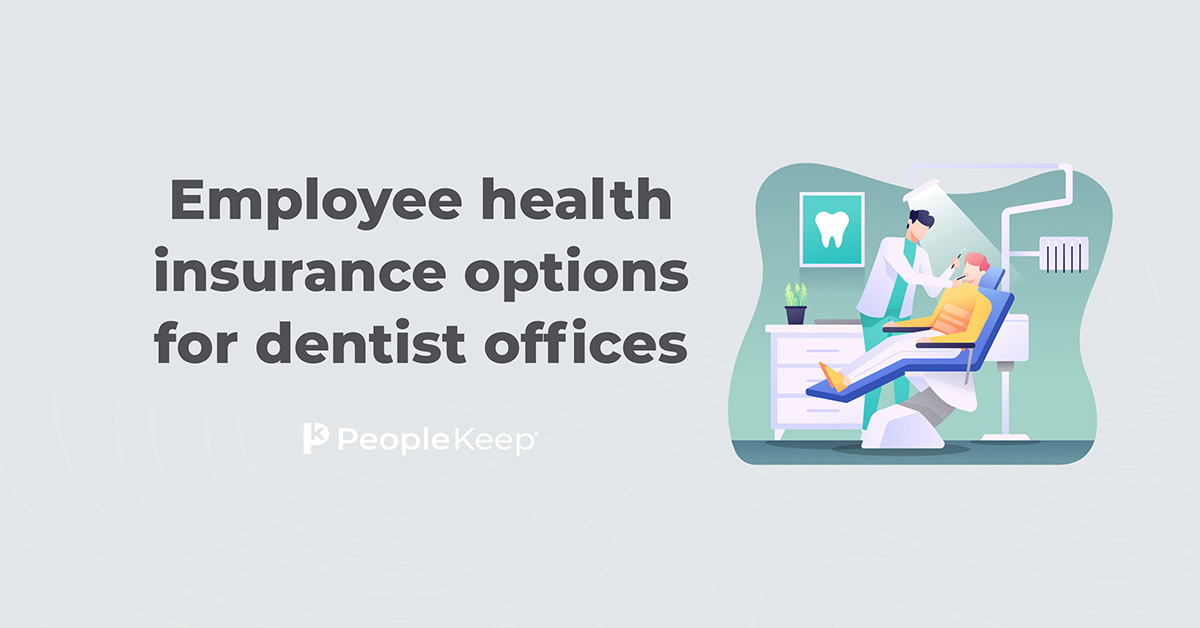How to offer supplemental dental insurance
By Holly Bengfort on May 15, 2024 at 9:48 AM
Healthcare costs are high, with dental care expenses following suit. According to Authority Dental1, the average cost of a dental crown ranges from $800 to $2,500. While offering a primary dental policy can help employees cover these types of expenses, they may still have to pay a good portion of the bill. By offering supplemental dental insurance, you can help your employees save money on these costly procedures and maintain good oral health.
In this article, we'll go over how you can offer supplemental dental insurance to your employees.
Takeaways from this blog post:
- Supplemental dental coverage gives employees peace of mind by helping them pay for out-of-pocket costs that a primary policy may not fully cover.
- Employers can offer supplemental dental coverage through a supplemental policy or a dental discount plan, sometimes called a dental savings plan.
- An HRA is an affordable option for employers who want to offer supplemental dental coverage to their employees.
Supplemental dental insurance plans vs. primary dental insurance plans
Primary dental insurance is the main source of coverage for dental care expenses and typically provides a broader range of coverage. Supplemental dental insurance complements primary dental insurance. As a secondary plan, it can help cover out-of-pocket expenses that the primary insurance plan may not fully cover.
For example, if a procedure costs $800 and a primary plan covers only half of it, a supplemental plan can help cover the remaining costs. This dual coverage benefits individuals who need additional coverage for specific dental procedures or services.
What services does a primary dental plan cover?
Dental coverage differs depending on the policy and insurance company. But they generally cover similar expenses.
Typically, a primary dental plan covers2:
- Preventive care such as dental visits, dental cleanings, fluoride treatments, and routine X-rays
- Cavity fillings
- Tooth extractions
- Crowns, bridges, and implants
- Root canals and other necessary repair work
- Dental appliances, such as retainers
- Emergency dental procedures, such as oral surgery
What services does a supplemental plan cover?
Most supplemental insurance policies generally cover basic treatments like checkups, X-rays, and cleanings.
Depending on the type of plan, policyholders may also have full or partial coverage for:
- Orthodontic treatment
- Periodontal treatment
- Crowns
- Bridges
- Tooth bonding
- Dental implants
- Dentures
Most insurance plans don't cover cosmetic treatments, so your employees will need to pay out-of-pocket for procedures like teeth whitening and veneers.
How can you offer supplemental coverage for dental care costs?
Here are a few ways that employers can offer supplemental dental insurance to their employees:
Partner with a dental insurance carrier
Employers can partner with a dental insurance provider to offer supplemental dental insurance to their employees. When you shop for plans, it's important to compare coverage options like health maintenance organization plans (HMOs), preferred provider organization plans (PPOs), and indemnity plans based on monthly costs, deductibles, and covered services to find the best fit for your employees. By working with a reputable insurance provider, employers can ensure that their employees can access quality dental care at affordable rates.
Offer a dental discount plan
Dental discount plans, or dental savings plans, are another option for employers looking to provide supplemental dental insurance to their employees. These plans offer discounted rates on dental services at participating dentists, making it more affordable for employees to receive the care they need.
Dental discount plans3 require employers or employees to pay an annual membership fee to participate. They can pay it as a lump sum or split it into monthly installments, then pay out-of-pocket for discounted dental services throughout the year.
Provide reimbursement for dental expenses
Another option for employers is to reimburse dental expenses your employees incur. This can include reimbursement for routine cleanings, fillings, and other dental procedures, helping employees cover the cost of their dental care.
With a health reimbursement arrangement (HRA), employers can easily reimburse their employees for more than 200 eligible expenses. This includes dental plan premiums or dental care costs. An HRA can also reimburse dental veneers with a doctor's note if the service is medically necessary.
Unlike the previous options, HRAs cover more than dental treatments. You get more bang for your buck with an HRA since they allow you to reimburse your employees for medical expenses. This makes it an easy and affordable way to provide comprehensive coverage. With an employer-funded HRA, you can reimburse employees for their vision care, medical services, emergency treatment, mental health counseling, and monthly premiums for individual health insurance policies, depending on the type of HRA you offer. You simply set an allowance using tax-free money and reimburse your employees up to that amount.
You can offer the following HRAs to your employees:
- The qualified small employer HRA (QSEHRA): The QSEHRA is an alternative to group health insurance for employers with fewer than 50 full-time equivalent employees (FTEs). W-2 employees with health plans that provide minimum essential coverage (MEC) can participate, allowing them to receive tax-free reimbursements for out-of-pocket expenses and insurance premiums. There are annual limits to how much you can contribute.
- The individual coverage HRA (ICHRA): The ICHRA is another alternative to group health coverage, but for employers of all sizes. Employees need qualifying individual medical plans to participate in this benefit. However, unlike QSEHRAs, ICHRAs have no annual maximums on contributions. This means you can offer as much as you’d like in allowances. Plus, an ICHRA gives you the ability to differ allowances and benefit eligibility with 11 employee classes, such as full-time or part-time workers.
- The group coverage HRA (GCHRA): If you already offer a group health plan and don’t want to switch to a QSEHRA or ICHRA, you can still take advantage of an HRA. A GCHRA pairs with your group plan, allowing you to reimburse employees tax-free for qualifying medical expenses their group plan doesn’t fully cover. This includes out-of-pocket dental expenses. However, a GCHRA can’t reimburse premiums.
Why should you offer dental benefits to your employees?
Dental health is an important aspect of overall well-being, and having access to affordable dental care can help employees maintain good oral health and prevent costly dental issues in the future. Plus, offering a dental benefit can help attract and retain top talent at your organization.
According to PeopleKeep's 2024 Employee Benefits Survey, dental insurance ranked as the second most important benefit for employees, following health benefits. Results show that 91% of employees see dental benefits as important, yet only 53% of employers offer them. Providing dental benefits can help you stand out and improve employee satisfaction.
Conclusion
Supplemental dental insurance policies can provide additional coverage for employees who may need orthodontic treatments, cosmetic procedures, cleanings, and dental exams beyond what's covered by their basic dental benefits. Employers can easily reimburse employees for their dental care costs with an HRA, allowing employees to tailor their dental coverage to their individual needs.
Check out more resources
See these related articles

Employee health insurance options for dentist offices
Finding the right health benefit for your dental practice is essential. Discover the different health insurance options tailored for dental professionals.

How much is dental insurance?
Wondering how much dental insurance will set you back? Find out the average cost of dental insurance and what factors can impact the price.

Health insurance options for independent law firms
Explore health insurance options for independent law firms. Learn how to provide affordable, flexible coverage that meets your firm's unique needs.



